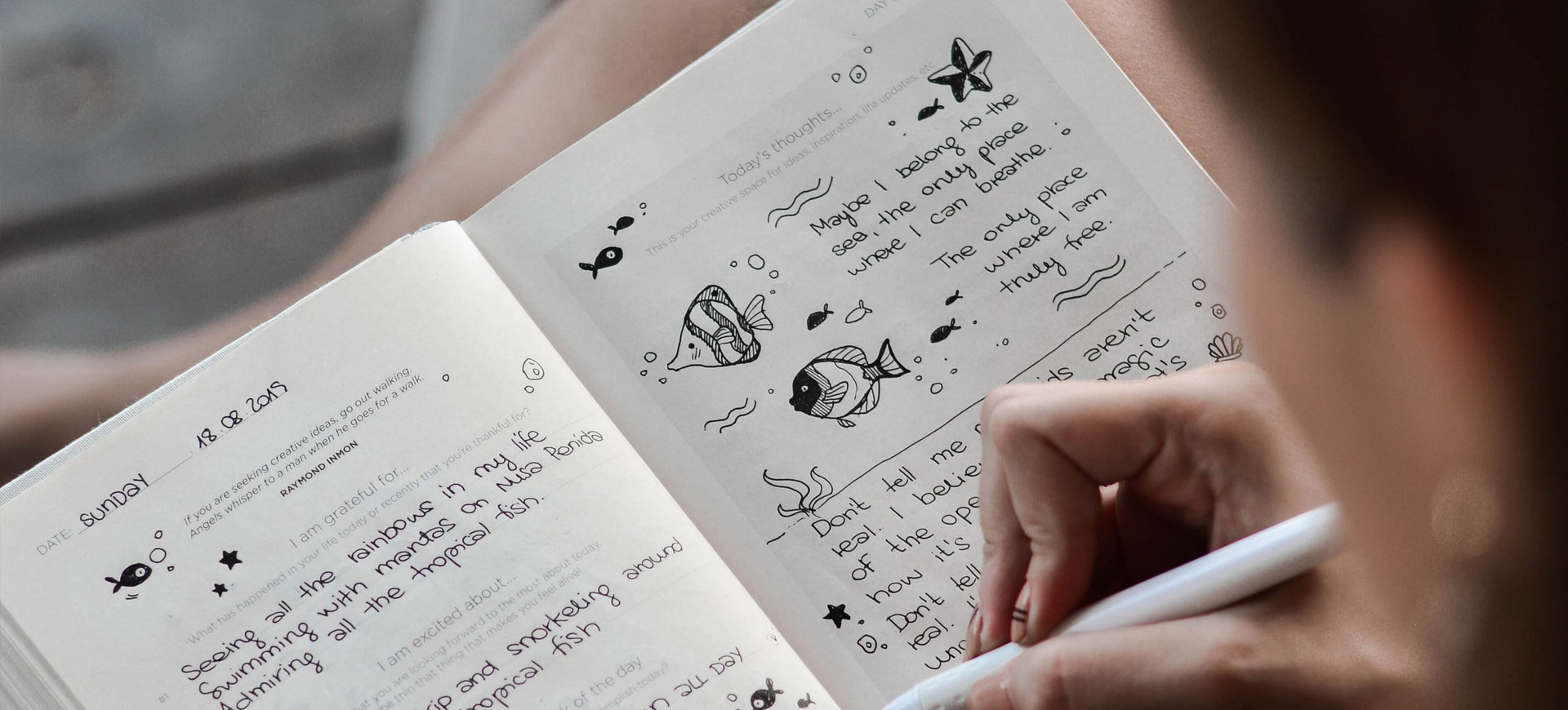
How Journaling Can Deepen Your Yoga Practice
I’ve always been an avid writer. Even before I knew how to write, I was scribbling in a journal, waiting for the day when the scribbles formed comprehensible words and sentences. Today, I have stacks of journals, my messy handwriting filling each page with my thoughts, fears, and dreams for the future.
So, it’s only natural that I’ve incorporated journaling and writing into my yoga practice.
There’s something about the simplicity of pen on paper that is so soothing to the mind.
Yoga helps to open our minds, clearing the mind-clutter to make room for inspiration and clarity. There have been so many times, right after a yoga class, lying in savasana, when I’ve had such profound clarity about a situation in my life, that I wished I’d had a journal beside me to jot down the thoughts that burbled up in my mind.
When you blend yoga and journaling together, it can not only deepen your yoga practice but also your understanding of who you are and your purpose in this life.
It’s in these moments when journaling can help us discover the deepest parts of ourselves and uncover our innermost truths. It’s kind of like peeling back the layers of the mind - deconstructing the mind chatter and the ego until you’re left with your one true self.
Here are three reasons why journaling can help deepen your yoga practice:
It’s a form of self-study
There are so many ways of practicing yoga that don’t involve asana, or the physical practice, and journaling can be one of them. Because journaling asks you to go deep within yourself, it can be viewed as a kind of self-study, or svadyaya - one of the niyamas in Patanjali’s Eight Limbs of Yoga. In fact, I’d argue that the physical act of writing by hand - not on a tablet, phone, or computer, but with pen and paper - is a yogic act in and of itself. It forces you to slow down and can be incredibly calming. There’s something about the simplicity of pen on paper that is so soothing to the mind.
It embraces the present moment.
Through asana, your body and mind are working as one. Think about it: It’s challenging to think of a work project as you attempt to fly into bakasana. Yoga disciplines the mind to focus on the present moment.
When you journal, you are also embracing the present moment. Sure, you might be writing about the goals you want to achieve one day or everyday stressors, but you’re also tapping into your mental state in the here and now. When you blend yoga and journaling together, it can not only deepen your yoga practice but also your understanding of who you are and your purpose in this life.

It helps you practice awareness
When we practice yoga, we practice becoming aware. Aware of our breath, our thoughts, the way we move in the world, our intentions, and how we interact with others. Journaling, too, can bring awareness to our emotions, thoughts, and how we want to live.
There are many different ways to weave journaling into your yoga practice, and I’ve listed some below. If you practice yoga at home, it might be a bit easier to incorporate, however even if you give a yoga class at a studio or a gym, you can still take a small journal with you and have it nearby in case inspiration strikes!
Journal before a yoga session
This can be a valuable way to tap into something you want to work on for the duration of your yoga practice. For instance, say you’re experiencing a lot of impatience and are feeling antsy and frustrated. Journaling a bit about how you’re feeling and what emotions are rising to the surface can help you tap into what you’d like your yoga practice to focus on. Or, say you’re super tired and aren’t really feeling the practice. You could set the intention of allowing this yoga session to bring you more energy, and open yourself up to receiving that. By journaling beforehand, you are practicing awareness and you’re setting an intention around your yoga practice.
Journal after a yoga session
In many cases, we don’t know what’s going to come up within us before a yoga session - it’s only after when we realize we were struggling with a lot of pent up anger or frustration or anxiety. Allow whatever came through during the physical postures to find its way onto the page afterwards. It can be illuminating what comes up and out after a yoga practice, so capturing those feelings and thoughts is extremely rewarding.
Free-write
Free writing is an incredible way to tap into your awareness and what is happening in the present moment. When you free write, you simply write whatever is coming into your mind at any given moment and you allow it to flow onto the page. If you ramble, great! If you spell something wrong or aren’t using punctuation, no problem! The point of free writing is just to let whatever is in your mind flow onto the page. I urge you to try it - it’s liberating!
Create a mantra
There are times when I journal that I notice my words forming a kind of personal mantra; it’s often a mantra that my heart and soul needs most at that moment in time. For example, one of my mantras that I wrote down after a particularly emotional yoga session was, “Help me find peace in my heart.” It has since been a mantra that I repeat to myself when I am feeling lost or anxious or scared. Repeating this mantra to myself always helps to calm me down and get back to center. Mantras are a way to practice mindfulness. When we repeat a mantra, we center and calm the mind. I urge you to practice creating a mantra through journaling.
Use prompts to help you get started
Sometimes, it’s easier if you have a few prompts to help open your mind and allow your thoughts to be written on the page. Here are a few that you can try:
- What am I feeling, in my body and mind, in this moment?
- How does my body feel? Are there any parts that are stiff, sore, or need attention?
- What emotions am I feeling in this moment?
- What did this yoga session teach me about myself?
- What am I struggling to overcome?
- Is there anything holding me back or is there anything I’m resisting?
Try journaling and see what you think. I encourage you to introduce this way of journaling to your students! Bring some sheets of paper and some pens, and invite your students to journal a bit either before or after class. You can incorporate the intention of your class by asking them to write down what it means to them and what thoughts or emotions come up.
You can incorporate the intention of your class by asking them to write down what it means to them and what thoughts or emotions come up.
There are so many ways to become more present and experience more awareness in our day-to-day lives, and journaling is one of them. I hope you find value in the simple act of journaling, and embrace it as a way of deepening your connection with the principles of yoga and with yourself.






